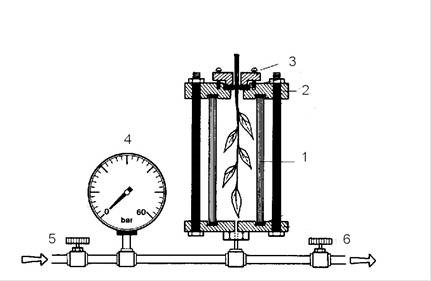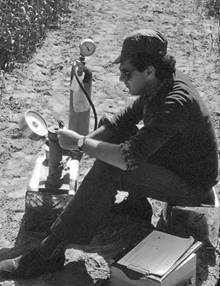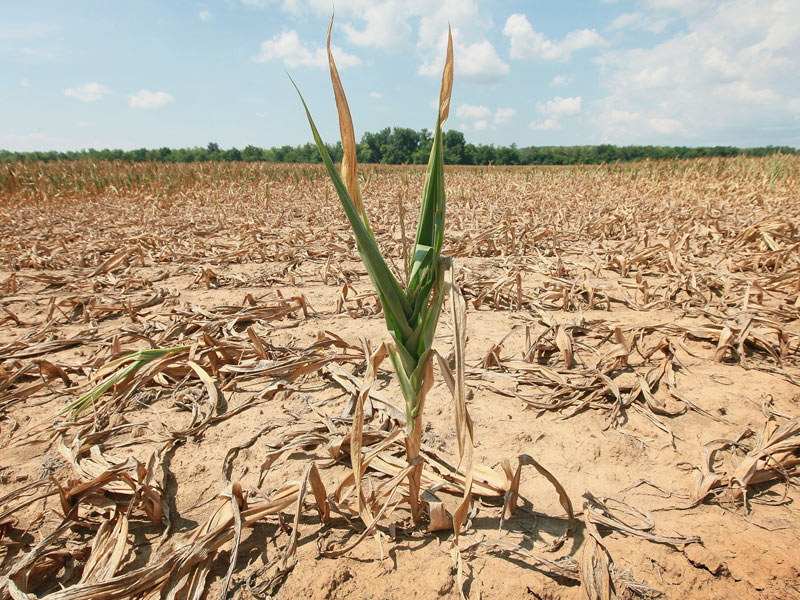The pressure chamber for leaf water potential
A relatively quick method for estimating the water potential of large pieces of tissues, such as leaves and small shoots, is by use of the pressure chamber. This method was pioneered by Henry Dixon at Trinity College, Dublin, at the beginning of the twentieth century, but it did not come into widespread use until P. Scholander and coworkers at the Scripps Institution of Oceanography improved the instrument design and showed its practical use (Fig.1).
The organ to be measured is excised from the plant and is sealed in a pressure chamber with the cut edge (a petiole in the case of a broad-leaf) protruding out. Before excision, the water column in the xylem is under tension. When the water column is broken by excision of the organ, water is pulled rapidly from the xylem into the surrounding living cells under the gradient of water potential existing between cells and xylem. The chamber is then pressurizes with compressed gas until the distribution of water between the living cells and the xylem conduits is returned to its initial, pre-excision, state. This can be detected visually by observing when the water returns to the open ends of the xylem conduits that can be seen in the cut surface. The pressure needed to bring the water back to its initial distribution is called the balance pressure. It is equated with whole leaf water potential. This however is not absolutely correct since the balance pressure may also depend on tissue osmotic potential which is an unknown quantity at the time of measurement. Furthermore the measurement should be performed with a non-transpiring leaf and wrapping the leaf in plastic bag before its excision and during measurement is recommended. However, for comparative phenotyping work where large differences are sought these errors are of a lesser significance as with accurate physiological studies.
The method is therefore widely used in detecting genetic variation in dehydration avoidance in terms of leaf water potential. Care must be taken to minimize the time duration between leaf excision and its measurement. Usually one person operates the chamber while another one fetches the leaf samples.
By comparing water potential and volumetric water content of leaves (pressure-volume curve) the pressure chamber has been found useful also for estimating osmotic potential, turgor loss point, symplastic fraction, and bulk modulus of elasticity (Schulte, P.J. and Hinckley, T.M. 1985). However such studies are limited to a relatively small number of leaf samples and are beyond routine use in breeding work.
A “pump-up” version of the method (video) is available commercially as well as other options (e.g. PMS).










